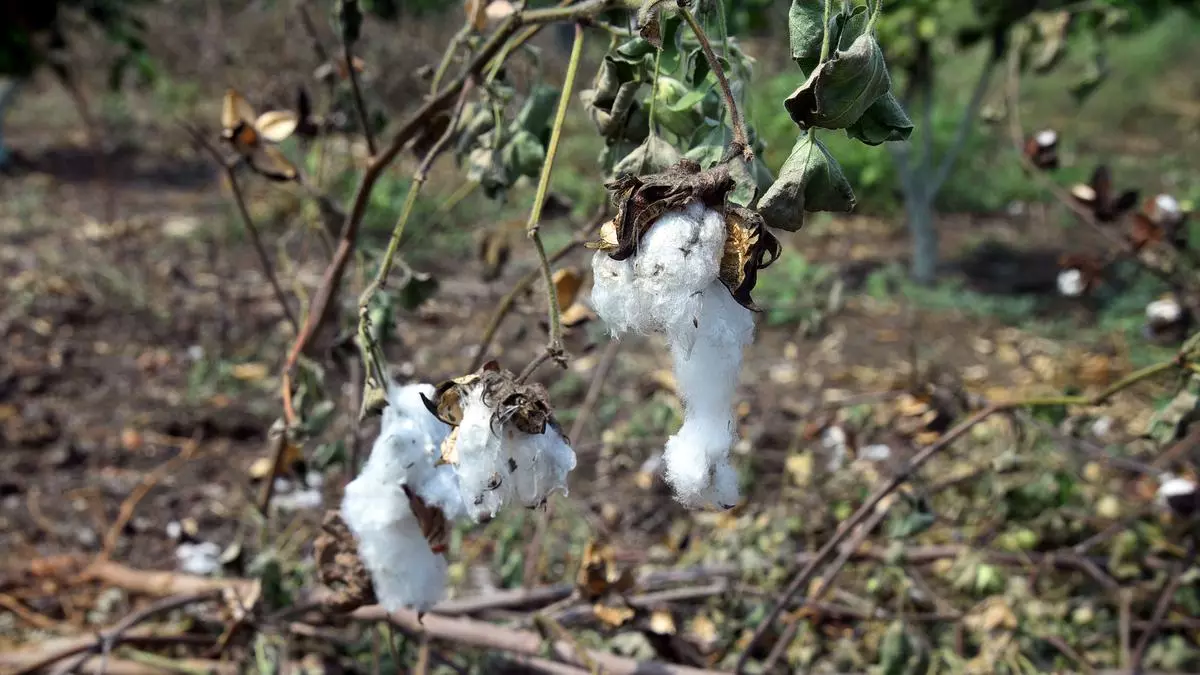Cotton farmers in North may shift to paddy, maize, guar
With the 2024-25 kharif cotton plantings set to begin in North India, stakeholders see a dip in acreages as weak prices for the fibre crop coupled with severe infestation of pink bollworm (PBW) witnessed last season and rising labour costs may prompt farmers to look at safer bets like paddy, maize and guar.
“Sentiments are weak for cotton in North India due to factors such as severe infestation of pink bollworm, low prices and rising labour costs,” Satyendar Singh, CEO of Seed Business at Crystal Crop Protection.
“There’s a slow start to the sowing this kharif season. The seed movement is slow. Till this time last year, lot of sales had taken place, but this time it is very very slow. How this will translate into acreages we will have to wait and see. Cotton acreages may not touch the last year’s levels in all the three Northern States,” Singh said.
In Punjab, the cotton area during 2023-24 kharif season had declined by 32 per cent to 1.69 lakh hectares over the previous year’s 2.49 lakh hectares. Rajasthan had also seen a dip in area during 2023-24 at 7.91 lakh hectares (8.15 lakh hectares in the previous year), while Haryana had seen a marginal increase at 6.83 lakh hectares(5.75 lakh hectares).
Acreage down
Sushil Phutela, Director, Indian Cotton Association Ltd said the trade feels that acreages may come down in Punjab this year due to the issues such as severe pest attacks affecting quality. In Haryana and Rajashtan, the acreages may remain at par with last years levels, Phutela said.
Bhagirath Choudhary, Founder Director of South Asia Biotechnology Centre (SABC) in Jodhpur said, farmers in Haryana and Rajasthan may go the Punjab way in reducing the cotton acreages this year as severe infestation of PBW had taken a toll on the quality of the crop. Morever, the realisations had taken a hit due to the poor quality and farmers were not compensated for the crop losses.
Alternatives
“Cotton acreages may come down by around 25 per cent in Haryana and Rajasthan and Punjab may also see a marginal dip,” Choudhary said. Farmers may go back to paddy in areas of Punjab where water availability is there, while they may switch over to guar in Rajasthan. Maize and mung beans may also emerge as an alternative, he said.
Yogesh Kumar Dhaka, a seed retailer in Sirsa said the acreages will be down by about 15 per cent. Sales of cotton seeds are slow when compared to last year and farmers have started planting in areas where mustard has been harvested, Dhaka said. In areas where water availability is there, farmers will go for paddy, while in other areas they may go for mungbeans and groundnuts, he said.
M Ramasami, Founder and Chairman of Rasi Seeds, expects some improvement in cotton acreages. “Forecast of monsoon is favourable and prices have been good. We expect a minimum 5 per cent increase in area under cotton across the country. However, some hiccups are also there due to the lack of technology and PBW damages have been very severe in some areas,” he added.
